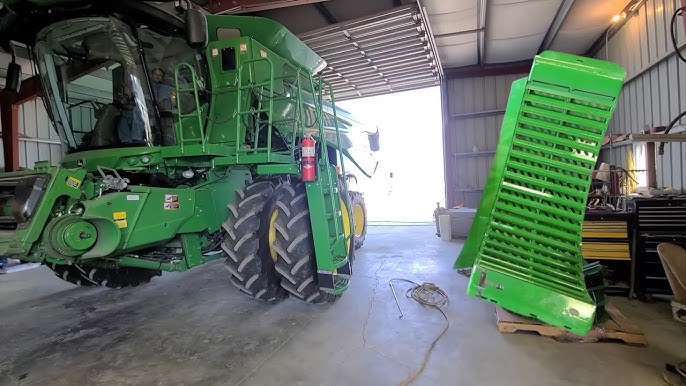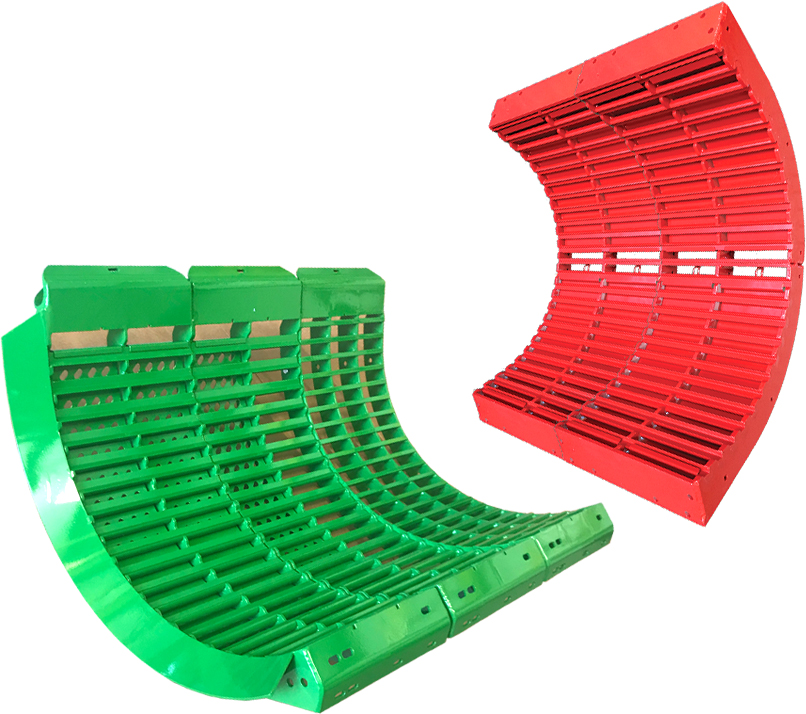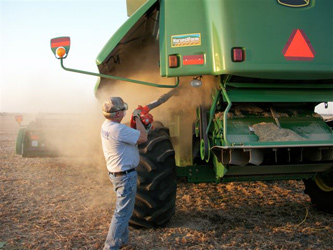During the critical harvest season, agricultural machinery’s performance can significantly impact yield and profitability. One integral component of the harvesting process is the combine harvester, which plays a pivotal role in separating grain from chaff. Among the many components of a combine, the concave stands out as an essential element responsible for this separation. In recent times, aftermarket combine concaves have gained traction, offering improved performance and features beyond original equipment manufacturer (OEM) concaves. This article delves into the world of aftermarket combine concaves, discussing their types, benefits, adjustment methods, common problems, and maintenance techniques.
Types of Combine Concaves:
Combine concaves are designed to effectively thresh and separate crops during harvesting. They come in various configurations to suit different crop types and conditions. Some common types of combine concaves include:
Wire Concaves: These feature a grid-like pattern of wires that aid in crop separation. They are versatile and can be suitable for a wide range of crops.
Rasp Bars Concaves: Equipped with bars containing rasp teeth, these concaves are particularly effective for small-seed crops like canola. They provide additional agitation during the separation process.
Helical Concaves: Helical bars on these concaves offer increased threshing efficiency and are especially beneficial for challenging crop conditions.
Spike-Tooth Concaves: These concaves have teeth resembling spikes that are ideal for crops with thick stems, like soybeans and sunflowers.
Smooth Concaves: Often used as the finishing concave in a sequence, these provide the final separation and reduce the risk of grain damage.
Benefits of Aftermarket Combine Concaves:
Aftermarket combine concaves offer several advantages over OEM concaves:
Enhanced Performance: Aftermarket concaves are often designed with improved threshing and separation capabilities, leading to better harvest efficiency.
Crop Versatility: Many aftermarket options are customizable, allowing farmers to switch between different crop types without changing the entire concave assembly.
Innovative Designs: Aftermarket manufacturers continuously innovate, introducing features like adjustable concave spacing, optimized concave angles, and better material choices.
Cost-Effectiveness: While aftermarket concaves provide advanced features, they are often priced more competitively than OEM options, offering better value for money.
Adjusting Combine Concaves:
Proper concave adjustment is crucial for achieving optimal harvesting results. The following steps outline a general approach to adjusting combine concaves:
Understand Crop Characteristics: Different crops require varying concave settings. Research and understand the crop’s structure, moisture content, and stem thickness.
Start Conservative: Begin with wider concave clearances and gradually tighten them until desired results are achieved. Avoid overly tight settings that could lead to grain damage.
Monitor Threshing Quality: Continuously observe the threshing quality by checking the grain sample. Look for whole grains, broken grains, and excessive straw in the sample.
Fine-Tune Rotor Speed: Combine rotor speed can affect concave performance. Adjust rotor speed in conjunction with concave settings to find the optimal combination.
Common Problems with Combine Concaves:
Several issues can arise with combine concaves, affecting their performance:
Grain Loss: Incorrect concave settings can lead to grain loss. This may be due to overly tight settings causing excessive grain damage or too loose settings leading to incomplete separation.
Uneven Threshing: Improperly adjusted concaves can result in uneven threshing, leaving behind pockets of unthreshed crops.
Material Buildup: Crop residue can accumulate on concave wires or bars, reducing efficiency. Regular cleaning is essential to prevent buildup.
Excessive Rotor Load: Inadequate concave settings can overload the combine’s rotor, leading to reduced throughput and potential mechanical damage.
Maintaining Combine Concaves:
Regular maintenance can extend the lifespan and performance of combine concaves:
Cleaning: After each use, clean concaves thoroughly to remove crop residue. This prevents material buildup that can impede performance.
Inspections: Periodically inspect concaves for wear, bent wires/bars, or other damage. Replace worn-out parts promptly to maintain efficient operation.
Lubrication: Some concaves have moving parts that require lubrication. Follow manufacturer guidelines for proper lubrication intervals.
Storage: When storing the combine during the off-season, remove and clean the concaves. Store them in a dry, protected area to prevent rust and degradation.
In conclusion, aftermarket combine concaves offer a range of benefits that contribute to improved harvesting efficiency. Their diverse designs cater to various crops and conditions, allowing farmers to fine-tune their harvesting processes. By understanding concave types, adjustment methods, potential problems, and maintenance techniques, farmers can optimize their combine harvester’s performance and ensure a successful harvest season year after year.



